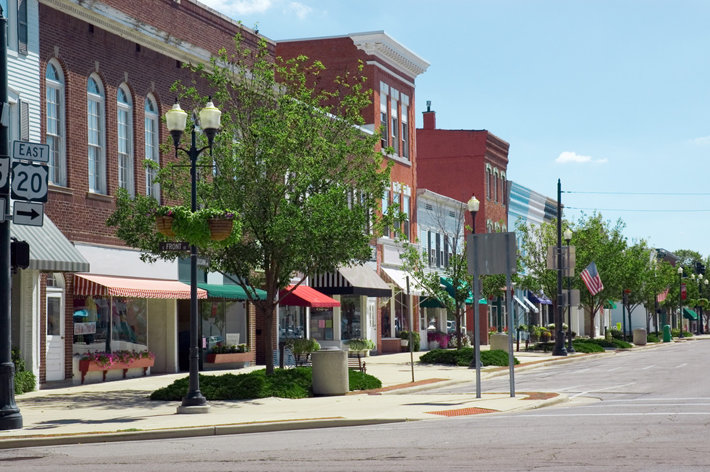Work, Community, Family, and How Social and Economic Disparities Affect Addiction

“Addiction does not discriminate.” How many times have we heard that line?
But what if I said to you that addiction does discriminate? What if I told you that discrimination in addiction is part of the fundamental reasons why we have such a cataclysmic addiction problem in the first place?
Addiction and Discrimination
Technically, the “Addiction does not discriminate” mantra has some truth behind it. There is no “magic immunity” that protects people from succumbing to a drug habit. There is no good fortune of genealogy or a particular method of upbringing that can protect someone from the possibility of drug and alcohol addiction in their adulthood.
The adolescent daughter of wealthy lawyers can just as quickly fall into substance abuse as the son of unemployed parents can. However, we cannot deny that the rates of drug addiction are much higher in some places than they are in others. We cannot deny that there are vivid social and economic disparities in our country which have led some to fall prey to substance abuse and others to avoid such risk.
Let’s make something very clear here. The physiological and biochemical aspects of addiction do not discriminate. However, the conditions that place certain people at risk for addiction are more prevalent in some locales than they are in others. And nine times out of ten, those conditions are directly tied to economic and social incongruity.
The Three Main Factors

It comes down to three factors which affect one’s likelihood for succumbing to a drug or alcohol problem. These factors are:
- The local community and place in which one lives;
- One’s family life;
- The workforce, job, and economy.
Let’s look at some truths. Across America, counties which are characterized by joblessness, poverty, poor remuneration in the jobs that do exist, high divorce rates, poor conditions of households and family life, and high pain levels due to demanding and labor-intensive jobs. These counties are also counties which have high drug overdose rates.
The Centers for Disease Control and Prevention has published information on this. At their website, you will find several great maps which show crucial data such as:
- Drug overdose deaths by state. (Notice how the states with the highest overdose rates are the states which also have the most impoverished counties, struggling workforces, etc.)
- Year-to-year increases in drug overdoses by state. (Notice again how the Appalachia area seems to experience the most consistent and significant increases in overdoses)
- U.S. prescribing rates. (Notice once again how Appalachia and the old industrial belt have significantly high prescribing rates).
A good look at these maps and a little research into the counties of the states most affected will show the connection between economic disparity, i.e., “hard times,” and drug overdoses.
There is a direct connection between economic struggles, poor pay for harsh jobs, poverty, and everything else that makes living hard and the resulting higher statistics of drug use in those areas. According to the University of New Hampshire, “From 2006 to 2015, counties with the highest levels of economic distress experienced an average of 7.9 more drug-related deaths per 100,000 persons than counties with the lowest levels. This difference is the equivalent of nearly 40,000 excess deaths in the most economically distressed counties over the 10-year period.”
Ouch. And it gets worse, too. Counties with higher levels of family dissolution (divorce, single parents, separation, etc.) had an average of 8.1 more drug deaths per 100,000 people. On the other hand, counties with strong religious presence, good, connected families, stable and dependable job markets that pay enough for families to live well… these counties experience the least amount of drug overdoses.
The University of New Hampshire also has a great map which shows the drug overdose rates per 100,000 residents. This map is broken down into counties. (Most maps only show drug overdose deaths by state). A quick look at this map shows us that the counties with economic struggles, poverty, crummy job markets, and struggles at home are the ones with the highest rates of drug overdoses.
Communities Stricken with Crisis

“In 2013, West Virginia providers wrote 110 opioid prescriptions per 100 persons (2.08 million prescriptions). In the same year, the average U.S. rate was 70 opioid prescriptions per 100 persons.”
“In 2013, West Virginia providers wrote 110 opioid prescriptions per 100 persons (2.08 million prescriptions). In the same year, the average U.S. rate was 70 opioid prescriptions per 100 persons.” That’s a direct quote from the National Institute on Drug Abuse. Why on earth were more prescriptions written in one year in West Virginia than the total number of people living in the state? It’s almost like Big Pharma knew that West Virginians (in a state of mostly blue-collar workers) would become addicted to their drugs.
Sam Quinone, in his book, Dreamland: The True Tale of America’s Opiate Epidemic, discusses places like Portsmouth, Ohio; McDowell County, West Virginia which have been devastated by the opioid epidemic. He states that, of the 100 counties in the U.S with the highest fatal drug overdose rates, 80 of them are in the heart of Appalachia and the former industrial belt: West Virginia, Kentucky, Ohio, Tennessee, Indiana, and Pennsylvania. The counties in these states once had thriving manufacturing and industry sectors, but which are now little more than ghost towns. The most activity that goes on in much of these districts is the drug deals themselves. The old workforce roams the streets, in pain, looking for a fix—and Big Pharma is there to supply it.
Work, Family, Community – The Areas of Life Which Provide the Most Meaning
If you took a cursory look at your life or the life of the average human being, you’d likely find that the vast majority of any person’s purpose in life comes from three areas: work, family, and community. These three areas consume most of our time, most of our thoughts, efforts, passions, and dreams.
But for decades, these three areas of life have been unraveling in many counties across America. Many of those who have succumbed to addiction will complain of a lack of connection to their families, difficulty in the workforce, and so on. And most of these individuals complain that these problems were extant before they started using drugs and alcohol. They began using substances because of issues in the family, difficulty in the workforce, or struggles within the community.
To play the Devil’s Advocate, many people studying addiction would say that the U.S. drug overdose crisis was driven by the onset of opioid pain relievers, excessive marketing from pharmaceutical companies, and exorbitant over-prescribing by doctors.
And they’re right.
But the geographic targeting of pharmaceutical companies to send more opioids to certain areas than others was not random.
You cannot start a fire without a spark. The fire was and is the opioid crisis. But the spark was the economic disparity and the lack of basic social survival of dozens of U.S. counties, plus an abundance of chronic pain and disability among the locals. And that pain is almost entirely due to the types of jobs in those areas which are heavily labor-intensive jobs and which now barely exist. The jobs are gone, but the chronic pain among the now-unemployed blue collar workers remains.
If we don’t invest in social programs, send good, well-paying jobs back to those communities, invest in education and good households, we’ll never curb the addiction epidemic.
We can do glorious battle with Big Pharma in the courthouses all we want. We can treat every addict that we can. We can bust every drug ring that shows its face. We can save every overdosing addict that we can reach. And we should do all of those things. But if we don’t work together as communities, as counties, as Americans to fix the underlying social crises and economic disparity problems that our nation faces, we’re never going to win.
Further Reading
Narconon is committed to helping the U.S. and the world overcome its drug problem. We will not rest until this goal has been met. If you are seeking help for yourself or a loved one, consider reading:
- “How to Get a Person to Seek Treatment”
- “How to Help with Opiate Addiction”
- “How to Escape the Rehab Trap”
Sources:
- https://www.cdc.gov/nchs/pressroom/sosmap/drug_poisoning_mortality
- https://www.cdc.gov/drugoverdose/data/statedeaths.html
- https://www.cdc.gov/drugoverdose/maps/rxcounty2017.html
- https://carsey.unh.edu/publication/drug-overdose-rates-highest-place-with-economicfamily-distress
- https://www.drugabuse.gov/drugs-abuse/opioids/opioid-summaries-by-state/west-virginia-opioid-summary
- http://www.samquinones.com/books/dreamland/
- https://www.narconon.org/drug-rehab/how-to-seek-treatment.html
- https://www.narconon.org/drug-rehab/how-to-help-with-opiate-addiction.html
- https://www.narconon.org/drug-rehab/


 ®
®